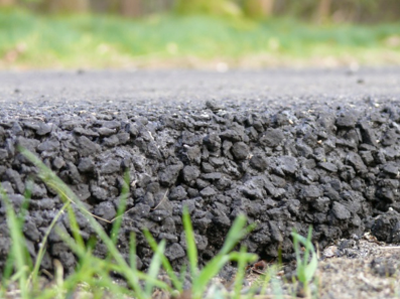Little Known Facts About A1 Professional Asphalt & Sealing Llc.
Wiki Article
A1 Professional Asphalt & Sealing Llc for Beginners
Table of ContentsNot known Details About A1 Professional Asphalt & Sealing Llc Our A1 Professional Asphalt & Sealing Llc PDFsMore About A1 Professional Asphalt & Sealing LlcEverything about A1 Professional Asphalt & Sealing LlcThe Ultimate Guide To A1 Professional Asphalt & Sealing Llc

The oil in a car engine is not simply oil. It has a range of ingredients to enhance the car's performance. These consist of polymers, thickness modifiers, warmth stabilizers, added lubricants, and use ingredients. The REOB contains all the additives that were in the waste oil in addition to the wear metals from the engine (mostly iron and copper).
However, by making numerous blends making use of different REOB examples and different asphalt binders, the variants mostly can be balanced out. Several States provided examples of recognized REOB composition to TFHRC scientists, that assessed the examples to compare the portion of included (understood) REOB to the found (checked) amount. The analyses revealed a comparable portion of included and located REOB.
Getting The A1 Professional Asphalt & Sealing Llc To Work
None of those States understood that the asphalt they were purchasing contained REOB. One State urged its samples had no REOB - https://slides.com/a1asphaltseal.Of the 1,532 samples evaluated, 12 percent contained REOB, and some contained appreciably high degrees of it at 1020 percent. The greatest level was 34 percent in an example from Texas, which TxDOT had used in a patching compound. This screening also exposed the presence of phosphoric acid in 11 percent of the samples, and 2 percent had ground tire rubber.
Two years earlier at TRB's annual conference, the Federal scientists held an REOB workshop and provided the searchings for of their research laboratory examinations to a standing room-only group. Although some firms do not specifically prohibit REOB, they do impose physical tests that avert its useeffectively a ban. asphalt sealcoating in st louis. Others do not prohibit it by specification, however have arrangements with asphalt providers to prevent using REOB
6 Easy Facts About A1 Professional Asphalt & Sealing Llc Described
A handful do enable REOB, some within specific limitations. For instance, Ohio and Texas limitation levels to less than 5 percent of the asphalt. To develop a reputable examination approach that all States can use, the TFHRC researchers established up a round-robin test plan. The participants are 11 State freeway firms (Illinois, Massachusetts, Minnesota, Mississippi, Montana, North Carolina, Oklahoma, South Carolina, Texas, Vermont, and Wyoming), 2 independent screening labs, the Ministry of Transportation in Ontario, Queen's University in Ontario, and an Ontario paving specialist.The participants are checking the examples independently utilizing the standards given by the TFHRC researchers. The outcome will certainly be a proposed AASHTO examination method that any State can take on and utilize.
The sidewalk with REOB, which lies 0.6 mile (1 kilometer) from the pavement without REOB, has identical subgrade, website traffic thickness, and climate. The section of Highway655 with 5 to 10 percent REOB showed significant breaking. In this example, the visibility of REOB was the identified root cause of cracking at a low temperatures.
"In our experience in Canada, even tiny amounts of 23 percent can be a problem." An area of test sidewalk in Minnesota (MN1-4) found to contain REOB also broke prematurely. The sidewalk executed well for the very first 3 to 4 years, yet after that began to fracture. This pavement is likewise subject to reduced temperature levels.
The Greatest Guide To A1 Professional Asphalt & Sealing Llc
The examinations were not substantial, but they revealed that at degrees of 6 percent or even more, the tensile strength of the asphalt dropped substantially. At a level of 3.5 percent REOB, the variation in the physical test approaches was better than the impact of REOB. It was hard for researchers to examine whether REOB was existing. https://www.anyflip.com/homepage/wmzvi#About.

One binder specification thought about is the distinction in between the reduced temperature level critical specification temperature level for tightness (S) in the bending beam rheometer and the bending light beam rheometer creep incline (m-value) noted as Tcritical. 2 independent research teams, one from AASHTO and the various other from the Asphalt Institute, ended that more study is needed on the use of REOB in asphalt.
Previously, all asphalt screening gauged engineering homes such as rigidity. These tests do not show what products had been added to the asphalt.

A1 Professional Asphalt & Sealing Llc Fundamentals Explained
These results show there are weak points in the standard engineering testing methods that may be manipulated. The manufacturer might have an economic advantage and the item passes all the standardized examinations, yet the product might not be valuable to ensuring long-lasting efficiency. To address this issue and the growth of brand-new asphalt ingredients and extenders, TFHRC is starting a research study program to utilize portable spectroscopic tools, x-ray fluorescence spectroscopy, and Fourier change infrared spectroscopy to enable evaluations to be performed in the area as opposed to needing to take samples back to the laboratory.Report this wiki page